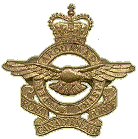Bill Hillman's Monthly Military Tribute
AS YOU WERE . . .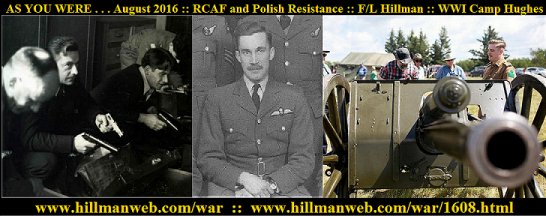
WAR YEARS ECLECTICA
2016.08 Edition
JOIN OUR FACEBOOK GROUP HERE
Click for larger images
Honouring 'silent and unseen' fighters
who led Polish resistance
Seventy-five years after the Cichociemni were parachuted into Nazi-occupied Poland,
British and Polish special forces mark little-known chapter of the war
The Guardian ~ June 11, 2016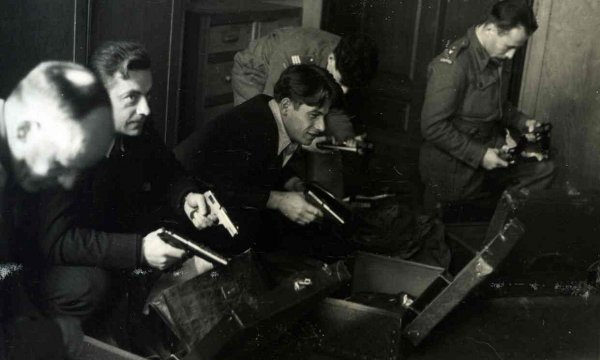
Five men, Polish recruits of the Cichociemni, in uniforms holding handguns
Polish recruits of the Cichociemni unit are trained at Audley End, Essex.Senior officers and veterans from Polish and British special forces are to gather in London to mark the 75th anniversary of a little-known chapter of the secret war against the Nazis. The soldiers will on Saturday be honouring the Cichociemni (the Silent and Unseen) – Polish guerrilla fighters trained in Britain. They were parachuted at night into occupied Poland from 1941 onwards, the first such air drops behind German lines, to lead the resistance movement against the Nazi occupation.
The Armia Krajowa (the “home army”) had 300,000 men and women fighting for it at its peak, by far the biggest resistance movement under the Third Reich, and it temporarily succeeded in liberating Warsaw in the summer of 1944. Many of its leaders were Cichociemni. However, their history was suppressed even before the war was over by Poland’s new Soviet occupiers, who saw them as British agents.
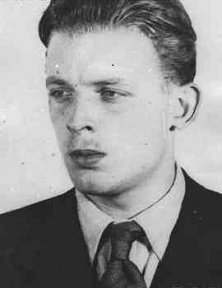
Aleksander Tarnawski,
c1943, one of the Cichociemni.
Now 95, he did a parachute jump two years agoOf the 316 Cichociemni who parachuted into occupied Poland, 103 were killed in the war, either in combat or in camps or under Gestapo torture. Nine were killed by the Soviet secret police after the war, and many more were imprisoned. Some managed to avoid capture by melting back into postwar Polish life, either changing their names or keeping their wartime exploits a secret. Just one of the 316 is still alive. Aleksander Tarnawski, who flew to London for this weekend’s event, is 95 but evidently still fit. Less than two years ago, he carried out a parachute jump.
Up until then, Tarnawski had last launched himself out of a plane in April 1944, when he jumped at night from an RAF Halifax bomber flying from Brindisi, southern Italy. He landed in a village outside Warsaw near the banks of the Vistula, where he was met by partisans who knew him by his codename, Uplaz (a southern Polish dialect word for meadow). After a period of reconnaissance, he took command of an AK group in Nowogródek (now Navahrudak in Belarus).
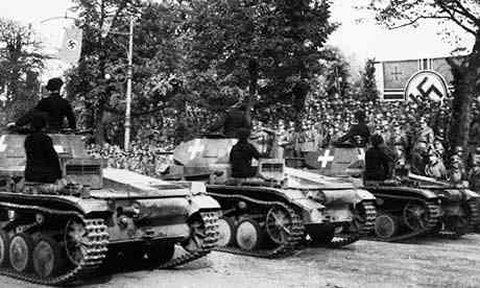
Debunking Polish stereotypes: the cavalry charge against German tanks
Read more“That area in eastern Poland was a complete free-for-all. There were different partisan bands and we were fighting off Soviet-backed groups for much of the rest of the war,” Tarnawski said. His group helped to liberate Vilnius, the Lithuanian capital, but after that they were rounded up by the Soviet secret police, the NKVD. Tarnawski escaped and stayed at liberty in communist Poland by keeping his Cichociemni past a secret. “If someone says nothing to his neighbours or at work, nobody is going to find you whether it’s the Gestapo or the NKVD looking for you,” he told the Guardian. “So I had no problems.”
When an independent Polish government sought to create a new special forces unit after the collapse of communism in the peaceful Solidarity revolution of 1989, the young recruits had never heard of their wartime predecessors. “It was forbidden in Poland to mention the Cichociemni,” said Colonel Piotr Gastal, who is now head of Grom (Operational Manoeuvring Response Group). “Of the Cichociemni who survived world war two, many of them were killed by the communists or were put in communist regime prisons. So not many of us young guys had ever heard of them.”
Grom’s first commander, Slawomir Petelicki, tracked down former Cichociemni parachutists in 1995 to ask permission to use the name in the unit’s title, and took one veteran to Hereford to watch his men train with the SAS as a way of convincing them Grom were worthy successors. Since then, Grom’s full title includes the words “named in honour of the Cichociemni of the Armia Krajowa”.
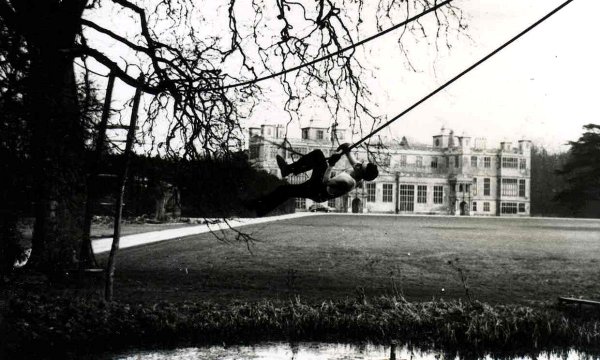
A Cichociemni volunteer on an assault course at Audley End in Essex.The Cichociemni were drawn from across Europe and Asia, where Polish forces had been scattered by the carve-up of the country by Hitler and Stalin in 1939.
Tarnawski, who was studying chemistry in Lódz at the time the war broke out, walked out of the country over the southern mountains to Czechoslovakia and Hungary to join free Polish forces in France. And when France fell he crossed the Pyrenees and got on a boat to the UK.
An early Cichociemni recruit, he underwent tough physical training in Scotland, learned to parachute jump in Ringway airfield, now Manchester airport, and developed skills in underground warfare in Audley End, a stately home in Essex, known in the Special Operations Executive (SOE) as Station 43.
The Station 43 course involved close combat, robbery, planting booby traps, assassination and forgery, as well as mock raids on the post office and other local institutions, which sometimes led to misunderstandings, occasional injuries and at least a couple of deaths from friendly fire. Despite all that, relations with locals stayed cordial to the end of the war. “At every stage of the training, starting with the Scots, all the people we worked with and trained alongside were good, decent and honest people. I look back at it with enormous pleasure,” Tarnawski recalled.
Audley End was run by the Polish section of the SOE, and they guarded their autonomy closely. Unlike other national sections, the Cichociemni ceased to be SOE soldiers as soon as they touched down on Polish soil, and came under AK command. They were involved in some of the great intelligence coups of the war. At one point they were able to recover a German V2 rocket and smuggled its components into Poland, from where it was flown in a RAF Dakota plane back to the UK for study.
soldiers in uniform gather around two army vehicles.
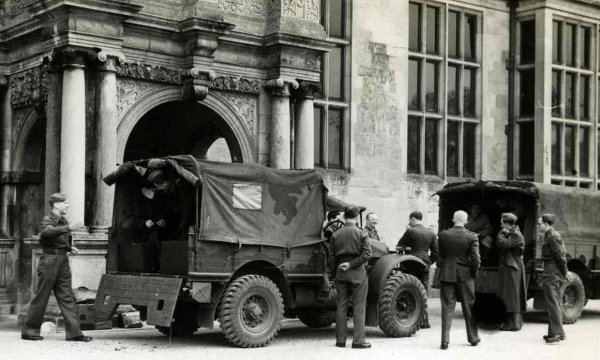
Polish soldiers from Cichociemni at Audley End, Essex.About 100 of the Cichociemni were involved in the 1944 Warsaw uprising, which ultimately failed because the Red Army support the AK had been expecting failed to materialise. Stalin halted his forces on the east bank of the Vistula and waited for the AK to be pulverised by the Germans. By the time Tarnawski found his way there on foot, much of the Polish capital had been razed to the ground. “The sight of it was appalling. There was not a single soul. Empty streets that were in ruins,” he said. “It’s hard to imagine now.”
Today, there is little at Audley End to mark the presence of the Cichociemni. Its great Jacobean hall is filled with English portraits and old swords. Schoolchildren dressed as Victorian urchins run across its expansive lawns. All that remains are the smallest of traces, a scrap of a timetable in Polish still stuck to the wall of a storeroom, some scrawled handwriting inside a cupboard for candles, and some labels in the cellar saying which guns and grenades should be kept where.
Ian Valentine, the author of Station 43: Audley End and SOE’s Polish Section, said the stately home was the Cichociemni spiritual birthplace. “The facade of the building, I’m sure, will be familiar to Grom recruits today,” Valentine said. “The house itself, as the finishing school for Polish agents, remains an important historical link in Polish resistance during world war two.”
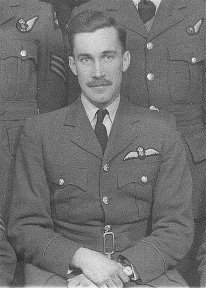

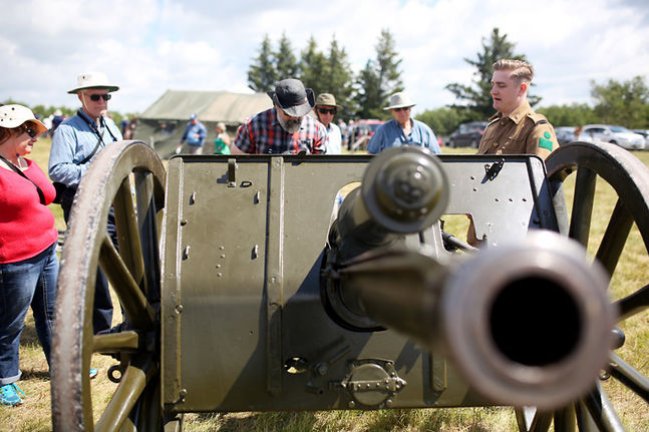
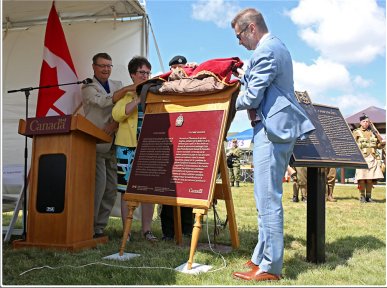
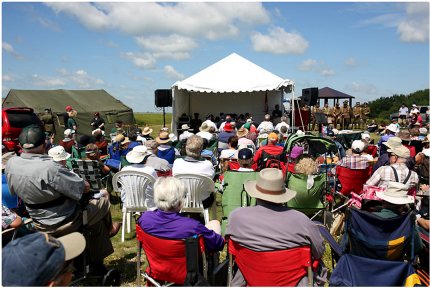
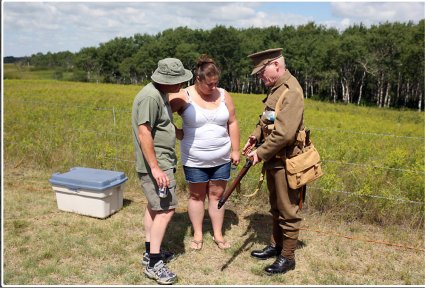
 .
.